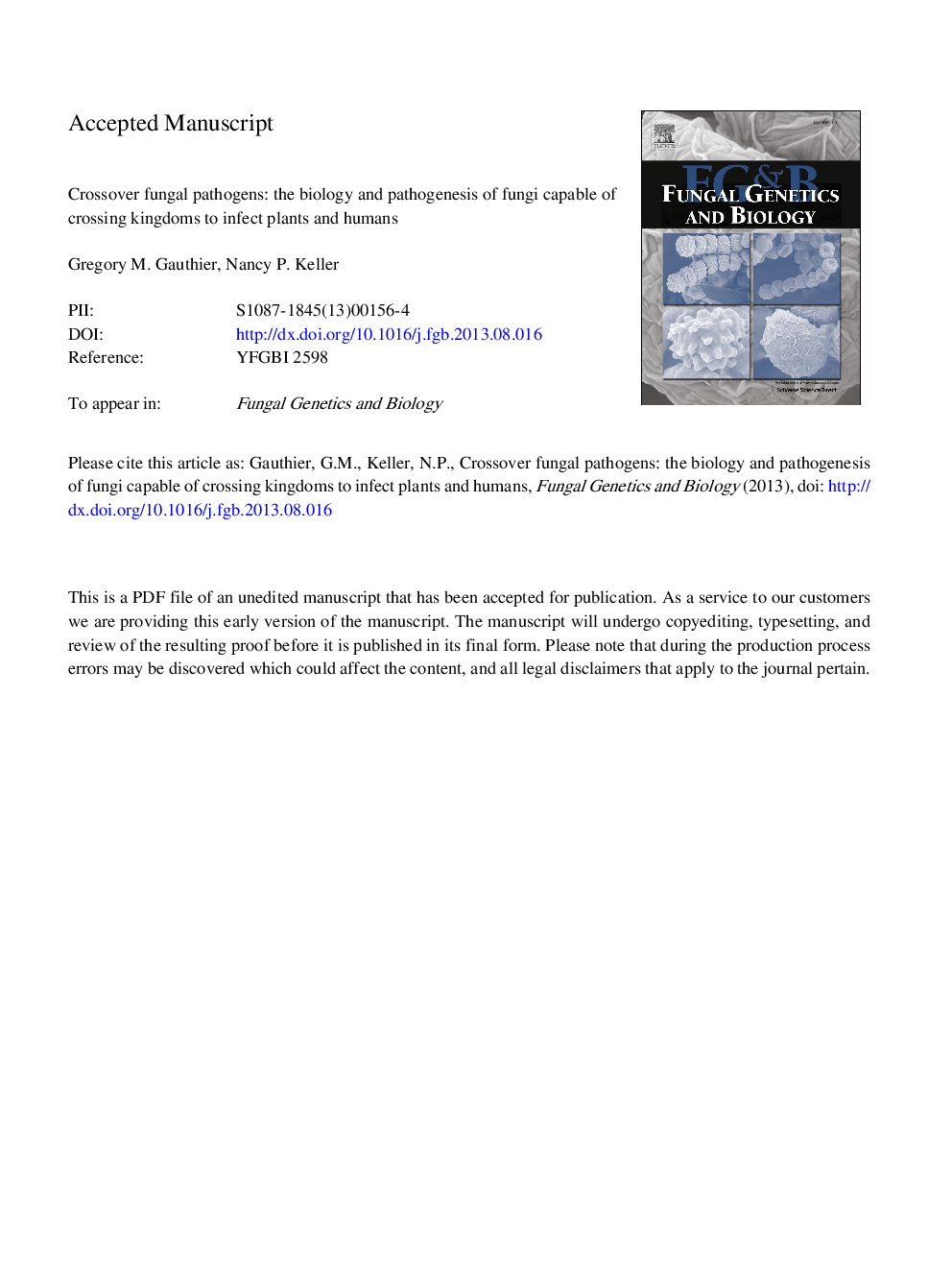| Article ID | Journal | Published Year | Pages | File Type |
|---|---|---|---|---|
| 8470945 | Fungal Genetics and Biology | 2013 | 45 Pages |
Abstract
The outbreak of fungal meningitis associated with contaminated methylprednisolone acetate has thrust the importance of fungal infections into the public consciousness. The predominant pathogen isolated from clinical specimens, Exserohilum rostratum (teleomorph: Setosphaeria rostrata), is a dematiaceous fungus that infects grasses and rarely humans. This outbreak highlights the potential for fungal pathogens to infect both plants and humans. Most crossover or trans-kingdom pathogens are soil saprophytes and include fungi in Ascomycota and Mucormycotina phyla. To establish infection, crossover fungi must overcome disparate, host-specific barriers, including protective surfaces (e.g. cuticle, skin), elevated temperature, and immune defenses. This review illuminates the underlying mechanisms used by crossover fungi to cause infection in plants and mammals, and highlights critical events that lead to human infection by these pathogens. Several genes including veA, laeA, and hapX are important in regulating biological processes in fungi important for both invasive plant and animal infections.
Related Topics
Life Sciences
Biochemistry, Genetics and Molecular Biology
Cell Biology
Authors
Gregory M. Gauthier, Nancy P. Keller,
